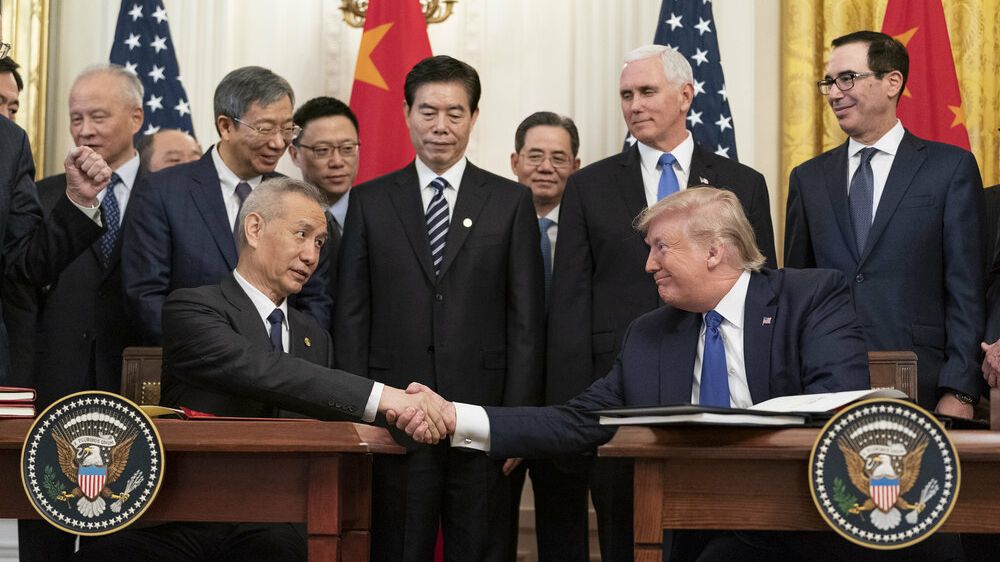An abbreviated version of this article was first published in East Asia Forum under the title "US-China watchers should keep their eye on semiconductors".
China’s ambitions for its semiconductor industry will provide a telling bellwether for the future of US-China trade relations. China’s objectives – and more precisely, the manner in which they intend to achieve them — will raise vexing issues for US policy makers. And since similar issues are arising across a number of other key sectors, the manner in which the semiconductor issue is dealt with will tell us a lot about whether the two countries will be able to work out a broader modus vivendi for their trading relationship moving forward.
Here’s the background: Semiconductors have become a fundamental building block of today’s high-technology knowledge economy, powering everything from cell phones to sophisticated medical diagnostic equipment and solar panels.
Indeed, the flagship Chinese semiconductor company, SMIC, is effectively a foundry operating 2-3 generations behind state of the art. The cutting edge work is being done by firms like the US giant Intel, which is pushing the envelope in augmented reality/virtual reality, while Korea’s Samsung is the leader in developing 3D NAND, which stacks memory vertically to increase capacity in the same node. Chinese companies lack the sophisticated design know-how that enables architectures for advanced applications.
This innovation edge is reflected, not surprisingly, in global market share, where Intel sits atop the table, boasting a formidable 21 percent share (based on revenues), with Korea’s Samsung in second spot with 15 percent, followed by TSMC, Taiwan’s leading semiconductor company, with a 10 percent share. With foreign companies out so far ahead, China needs to import roughly 80% of the semiconductors used in its electronics manufacturing.
The predicament is obvious: the electronics sector is economically crucial for China, accounting for a whopping one-third of its overall exports — yet China is overwhelmingly dependent on imported semiconductors to produce these products.
It is entirely logical therefore that China would seek to bolster its semiconductor capabilities. The complication this poses for US-China trade relations, however, arises from the strategy China intends to use to get there. China has laid out in remarkably clear and transparent terms its intention to pursue an aggressive and highly interventionist industrial policy designed to foster the rapid development of its domestic semiconductor industry. The objectives are bold, to state things mildly: China will be at an advanced world level in semiconductor capacity in all major segments of the industry by 2030, according to the semiconductor promotion guidelines.
The tools and techniques to be used include forced technology transfers in exchange for market access, requiring or “encouraging” domestic customers to source from Chinese companies, providing subsidies to strengthen domestic firms, and providing capital to support the acquisition of strategic foreign firms. In fact, roughly $150 billion in public and state-influenced private funds will be subsidizing investments and acquisitions – all this according to a report by the President’s Council of Advisors on Science and Technology, issued in the waning days of the Obama Administration.
These formidable industrial policies will present US policy makers with thorny dilemmas. After all, it should go without saying that maintaining a preeminent position in the semiconductor industry is just as important to US policy makers as China’s desire to “catch-up” is to Chinese officials.
As a practical matter then, what are the approaches available to the US to respond to this challenge? In broad strokes, three (non-mutually exclusive) options seem most evident:
- Allow the competitive marketplace to determine who comes out on top, despite the fact that the Chinese government is employing a host of non-market tools to give an upper hand to its industry. This would be in keeping with the US’ professed post-WW II philosophy of free markets, free trade, and largely laissez faire economics.
- Forcefully utilize any and every available means to challenge and overturn as many of China’s industrial policies as possible. This would mean an aggressive use of US trade law — including retaliation or the threat of retaliation — as well as the WTO dispute settlement mechanism, where appropriate. The Committee on Foreign Investment in the US could also undertake more stringent review of potentially sensitive mergers and acquisition proposals.
- Develop a concerted national strategy to boost the competitiveness of the US semiconductor industry to help it maintain its lead. Some of the tools to pursue such a strategy would however be likely to resemble many of the same industrial policies that the US has often criticized China for pursuing. It should not be forgotten, though, that the history of the US tech industry (including semiconductors) is replete with examples of heavy US government involvement and support. And on a global basis, the semiconductor sector is far from being a truly free market.
It’s hard to see any of these options as being entirely ideal. Letting the marketplace sort things out while your competitor enjoys a host of non-market advantages would seem to almost concede the contest. Trade retaliation and an aggressive pushback would heighten the possibility of a larger and unwanted trade war. And pursuing similar industrial policies would fly in the face of traditional US aversion to “Industrial Planning” (still derided as the government “picking winners and losers”). It would also come with a hefty price tag in an era of already record-breaking US federal budget deficits.
Things are moving quickly. China’s stated and highly ambitious objectives for even just the next several years will require deliberate and potentially game-changing steps. US policy makers will have to sift through an unappealing menu of response options in short order.
US and Chinese officials should view this as an opportunity to work together constructively to find solutions, and head off potential conflict. A workable resolution would likely include, inter alia, greater transparency on precisely where and how the hand of government is operating, less conditionality on market access, better intellectual property protection, and a clear and predictable set of “rules of the road” for investment, either in the context of a bilateral investment treaty, or through some other mechanism.
In any case though, keep your eye on the semiconductor issue. It will tell us a lot about how the US and China are likely to manage their deep and increasingly complicated trade relationship in the years to come.
© The Hinrich Foundation. See our website Terms and conditions for our copyright and reprint policy. All statements of fact and the views, conclusions and recommendations expressed in this publication are the sole responsibility of the author(s).




